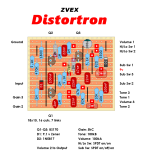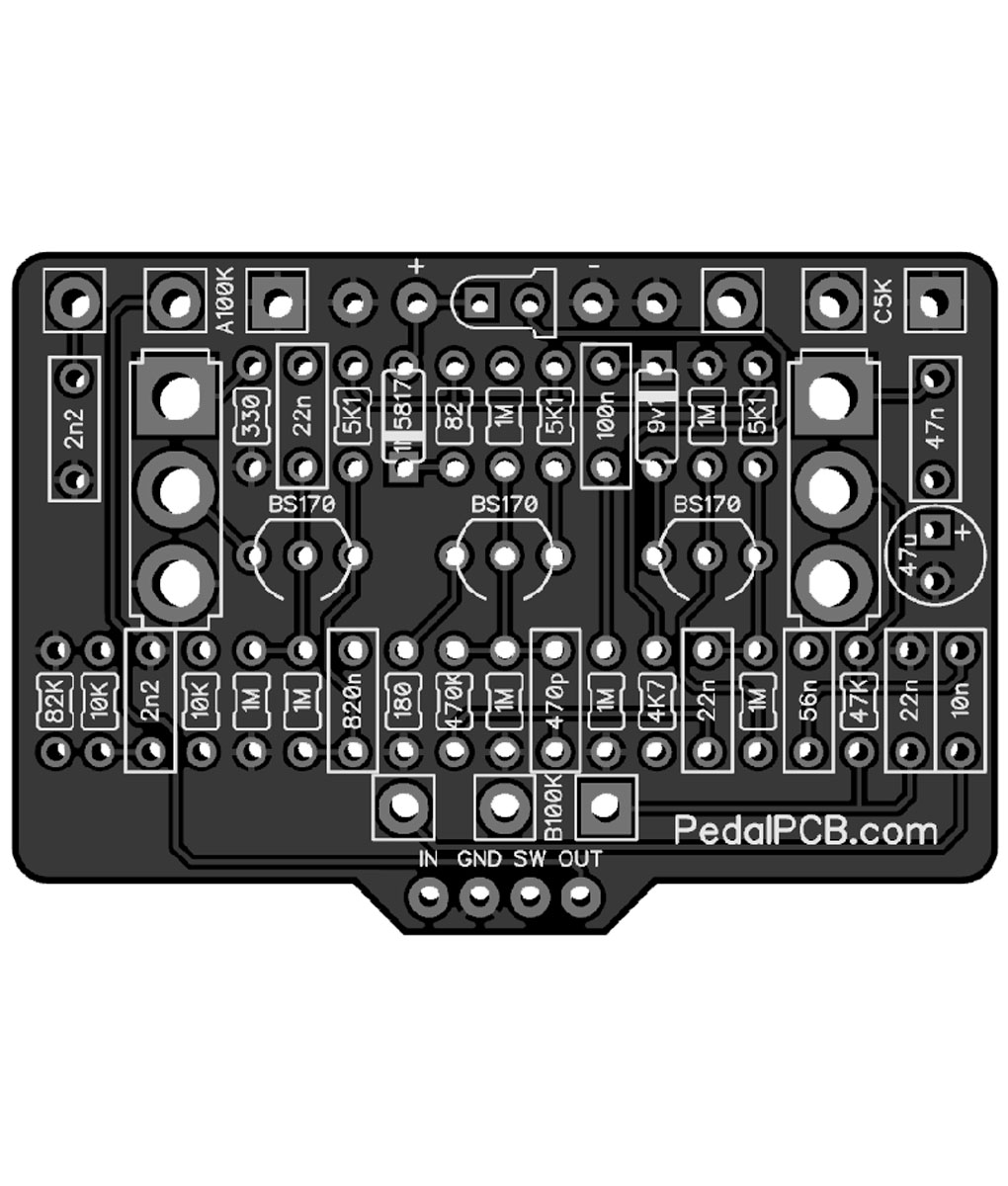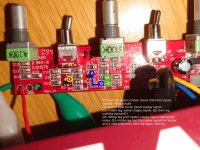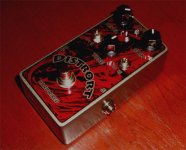Fama
Well-known member
Hello!
Bypass is fine, very weak signal when active (with drive and volume dimed, not much if they're not at max). I didn't trace the signal the whole way through since I don't have a schematic (apparently it's based on a BOR without the boost so this should be in the ballpark http://3.bp.blogspot.com/-kq989pNrt...V0VA6M2QQ/s1600/zvex_boxofrock_schematics.jpg).
But I did notice while audio probing that I get a good signal loud, nicely distorted signal (with drive and volume dimed) presumably right before Q2, and a very weak signal in Q2, and then a little boosted signal in Q3, so my guess is that Q2 is fried.
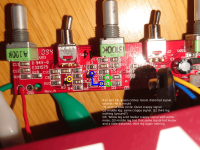
Like I wrote in the image, I get a good signal in the green circles, R12 which seems to lead to C8, and C8 seems to lead to Q2, but the good signal mostly disappears on the other side of C8 (so very weak signal in the blue circles). So that's why I'm wondering whether Q2 is broken.
I also noticed I get a resistance reading from each of the Q2 legs to each other, around 900 to 1.8k ohms or so, that doesn't happen with Q1 or Z1 on the right or Q3. Buuut I can't tell if this is a sign that something is wrong or not for sure, I suspect it might be. I can try measuring voltages, should they be around 4.5V or what?
I'll put in an order for SMT BS170's in the meantime, the only SMT components I have are J201's but they're not a replacement I don't think. Any other ideas I could check out so I could maybe order other parts if it's something else? From my understanding caps and resistors are pretty reliable though, at least compared to BS170's.
Bypass is fine, very weak signal when active (with drive and volume dimed, not much if they're not at max). I didn't trace the signal the whole way through since I don't have a schematic (apparently it's based on a BOR without the boost so this should be in the ballpark http://3.bp.blogspot.com/-kq989pNrt...V0VA6M2QQ/s1600/zvex_boxofrock_schematics.jpg).
But I did notice while audio probing that I get a good signal loud, nicely distorted signal (with drive and volume dimed) presumably right before Q2, and a very weak signal in Q2, and then a little boosted signal in Q3, so my guess is that Q2 is fried.

Like I wrote in the image, I get a good signal in the green circles, R12 which seems to lead to C8, and C8 seems to lead to Q2, but the good signal mostly disappears on the other side of C8 (so very weak signal in the blue circles). So that's why I'm wondering whether Q2 is broken.
I also noticed I get a resistance reading from each of the Q2 legs to each other, around 900 to 1.8k ohms or so, that doesn't happen with Q1 or Z1 on the right or Q3. Buuut I can't tell if this is a sign that something is wrong or not for sure, I suspect it might be. I can try measuring voltages, should they be around 4.5V or what?
I'll put in an order for SMT BS170's in the meantime, the only SMT components I have are J201's but they're not a replacement I don't think. Any other ideas I could check out so I could maybe order other parts if it's something else? From my understanding caps and resistors are pretty reliable though, at least compared to BS170's.


